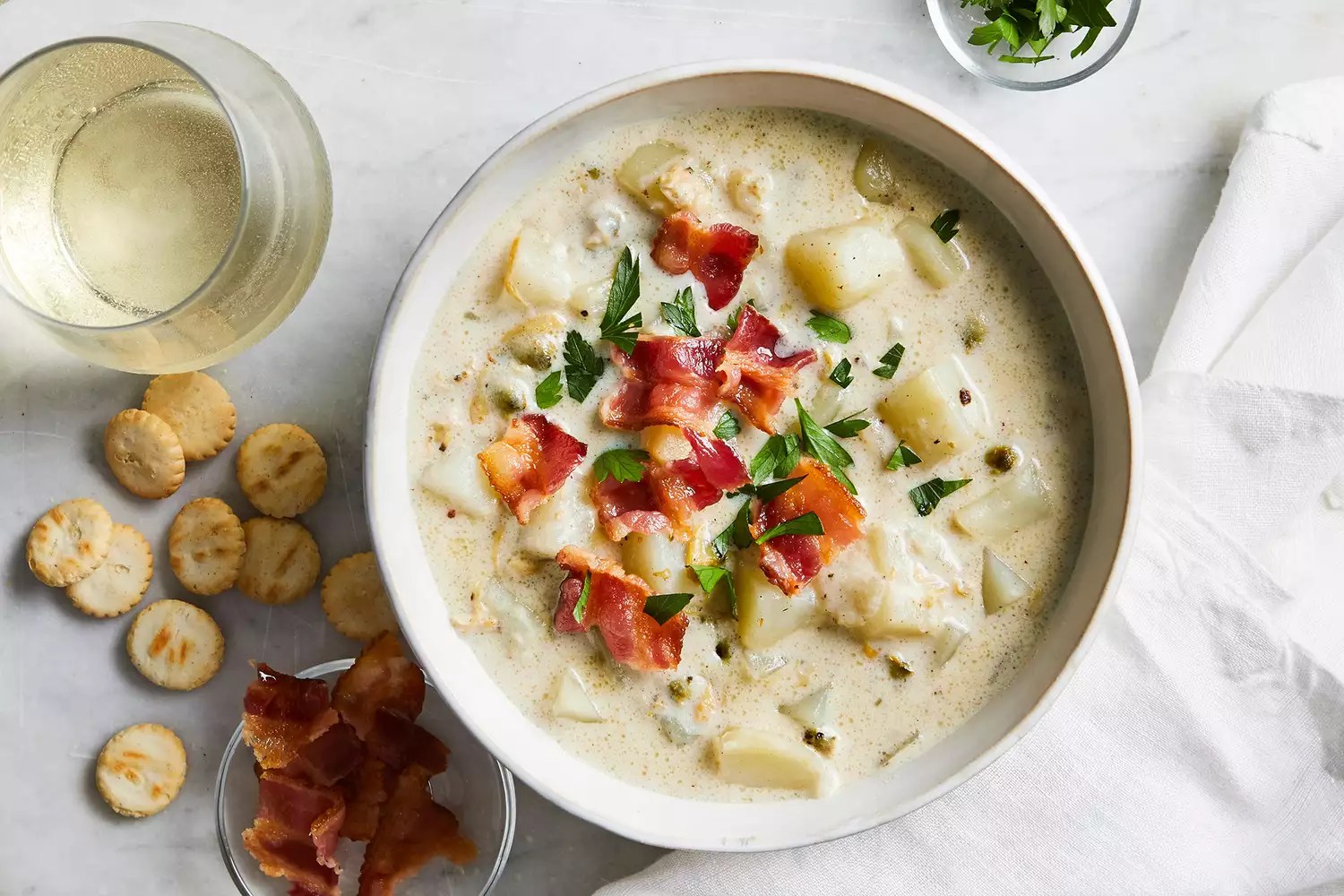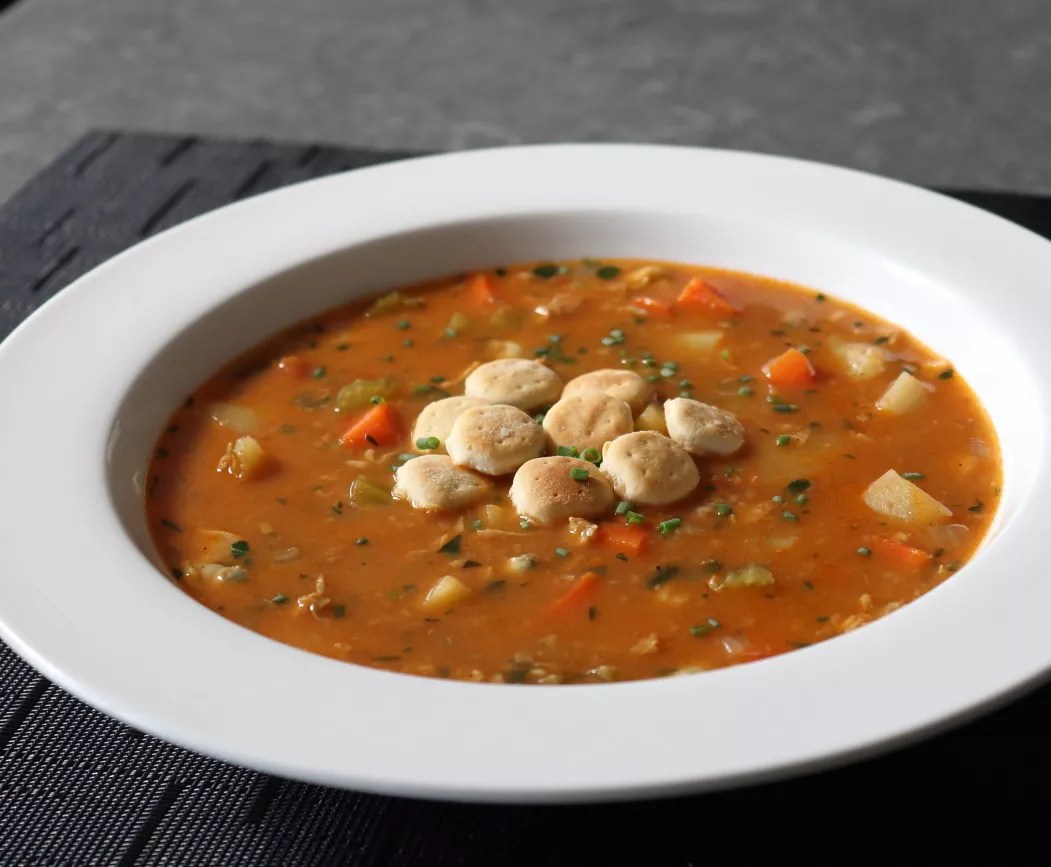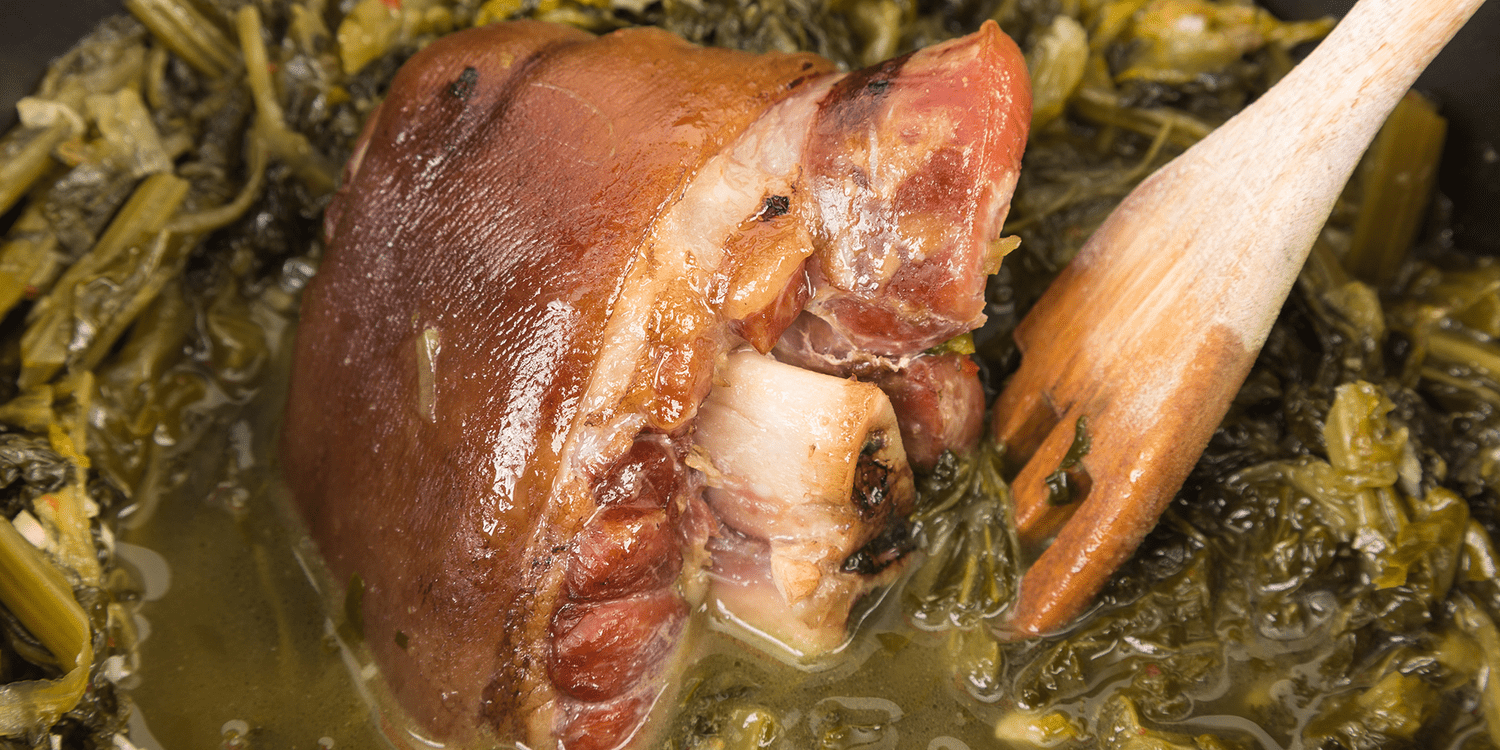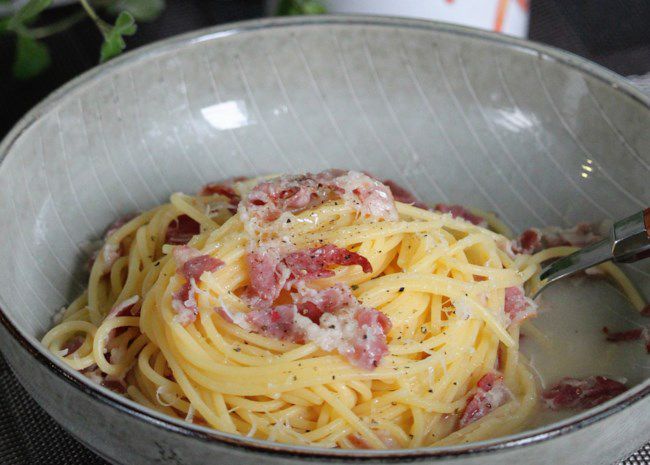If you know the difference between New England clam chowder and Manhattan clam chowder, you’d never mistake one for the other. In fact, there are plenty of people out there who’d be pretty upset if you did.
New England clam chowder is thick, creamy, and milky-white. Manhattan clam chowder is tomatoey, brothy, and clear. Both types share a clean, briny, and slightly-sweet flavor thanks to the clams—but that’s about it. The truth is, clam chowder is intensely divisive, and people typically either fall into one camp or the other.
But how could something so comforting and delicious spark so much debate? Below, I’ll explain the differences between New England and Manhattan clam chowder, and then take a closer look at why these two soups tend to trigger such intense feelings.
New England vs. Manhattan Clam Chowder
There are many different types of chowders, from shrimp chowder to corn chowder to chicken chowder, but clam chowder is arguably the most popular. Whether it’s New England or Manhattan, clam chowder typically contains fresh or canned clams, clam broth, potatoes, onions, celery, salt pork or bacon, and either milk, heavy cream, or tomatoes. Here’s a breakdown of the major differences between these two contentious chowders:
New England Clam Chowder

Also called Boston clam chowder, this soup gets its signature white color and creamy consistency from milk, heavy cream, or a mix of the two. New England clam chowder became popular in Boston during the early 1800s, where it was served at Union Oyster House, the oldest continuously operating restaurant in the country.
Bacon, clams, and heavy cream make this soup rich, hearty, and satisfying. In addition to those ingredients, you’ll also find onions, celery, and potatoes in this soup. New England chowder is almost always topped with oyster crackers, small pillowy crackers that act as the perfect vehicle for flavor. Here’s a classic clam chowder recipe to try, plus clever riffs:
- New England Clam Chowder
- Clam Chowder Shell Pasta
- Cast Iron Clam Chowder
Manhattan Clam Chowder

Manhattan clam chowder, on the other hand, does not contain any cream. Instead, this light, brothy chowder is tomato-based and has a reddish tint. The exact origin of this chowder is unclear—but many sources agree that it came from Rhode Island’s Portuguese fishing communities, who traveled back and forth from New York City’s Fulton Fish Market in the mid-1800s.
Manhattan chowder typically contains more vegetables than New England chowder, namely onions, celery, sometimes green bell peppers, and potatoes. Some recipes also call for flavorings like chopped garlic or fresh herbs such as thyme. Like New England chowder, Manhattan chowder is elevated with a spread of oyster crackers over top. Here are two delicious recipes to try:
- Chef John’s Manhattan Clam Chowder
- Quick Manhattan Clam Chowder
So, Which is the Better Chowder — New England or Manhattan?
The great clam chowder debate is nothing new—in fact, it has a long, storied past. In 1938, the state of Maine proposed a bill to outlaw the use of tomatoes in chowder altogether. The bill wasn’t passed, but the sentiment about Manhattan chowder remained. In her 1940 book A New England Sampler, Eleanor Early called Manhattan chowder “…only a vegetable soup,” and declared that “…tomatoes and clams have no more affinity than ice cream and horseradish.”
Clearly, New Englanders have feelings about Manhattan chowder. To dive even deeper into this madness, I wanted to go straight to the source. So I polled my friends and colleagues — all of which had either been born in or lived in New England or New York City — for their opinions on the two chowders. Here’s what they had to say:
The Boston native: “Isn’t the New England one the only real chowder?”
The Boston resident from the Midwest: “I’ve never had the Manhattan one, honestly. And I don’t think that I ever would!”
The full-blooded Manhattanite who grew up in Connecticut and Maine: “Manhattan clam chowder is about the only ‘Manhattan’ thing I don’t like. There’s nothing more disappointing than asking for a cup of chowder, and then receiving what appears to be a cup of pasta sauce.”
The Queens, New York, native: “I definitely prefer New England clam chowder—and I don’t even like creamy soups!”
The former New Yorker who now lives in Alabama: “I like both chowders. I used to hate Manhattan chowder, actually, but I’ve become weirdly fond of it now. Although, it does sorta remind me of a hot Bloody Mary when it’s done poorly…”
The Verdict
Not surprisingly, the New Englanders I spoke with were fiercely protective of New England clam chowder. To them, the only kind of clam chowder was the New England variety. More interesting was that Manhattan chowder didn’t get the same love from New Yorkers. In fact, they were downright apathetic about it.
Yes, Manhattan chowder tends to catch a lot of flack, but this doesn’t necessarily mean that it’s bad. It’s just different. And if you’re partial to lighter, tomato-based soups, you’ll probably enjoy it. Offer it to any New Englander, however, and they’ll probably tell you to get that imposter soup away from them.
No matter which side of this long-running dispute you’re on, one thing is true — New England clam chowder is an iconic regional food and it’s an essential part of New England identity. Just like how Southerners lay claim to fried chicken and sweet tea, New Englanders lay claim to clam chowder.




